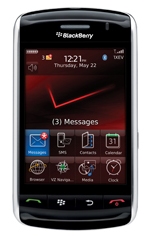The BlackBerry Storm, three weeks later


Well, two weeks later I've come to the conclusion that the Storm has definitely not lived up to my expectations. While I have not encountered the litany of issues that some reviewers have (see David Pogue's unusually snarky review for the New York Times), I nonetheless have been unable to embrace the Storm's key selling point - the clickable touchscreen.
As old school as it may seem, despite my appreciation for the iPhone 3G - especially once battery life improved post-launch - I could never actually make the switch to it as my primary device for one reason - my touchscreen typing skills are horrendous. So the thought of a product that would meld the sexiness of a touchscreen device, with the tactile response of a traditional keyboard was intriguing, to say the least.
Unfortunately, the Storm hasn't delivered on that promise.
If anything, my typing was actually a bit faster on the iPhone than it is on the Storm. And while it's not the sole culprit, as I noted in my first post, I definitely find it a bit disconcerting that the center of the Storm's screen has more give then the outer edges. While it's not the primary reason I had problems typing on the Storm, it certainly didn't help when I was trying to power through e-mails.
If the Storm were just another phone, I think my reaction (and likely, the reaction of many other reviewers) would have been totally different. It's a terrific phone, it has a very good camera, it's solid at recording video, its battery life puts the iPhone 3G to shame, and even music and video playback is pretty good. And while trying to email on it isn't truly horrendous, it's just that it's really poor in comparison to any other BlackBerry on the market (and especially compared to the Bold, which isn't just a great Blackberry, it's one of the best phones around).
So ultimately, is there any reason to think about a Storm instead of an iPhone 3G?
Well the first - and most obvious - reason is if you're a loyal Verizon Wireless customer, and the thought of switching to AT&T gives you the shivers. And as an AT&T Wireless customer, I can say that I now have a bit of Verizon-envy - their EV-DO service was noticeably faster for me than AT&T's 3G, almost fast enough to mitigate the fact that the Storm doesn't have built-in WiFi.
If battery life is a major concern, then patch or no patch, the iPhone 3G is simply not an ideal option - while getting through a work day without a recharge is nice, it's far from ideal. With the Storm, you can actually go away on a two- or maybe even three-day trip without worrying about running out of juice.
Otherwise, unless you're a camera phone freak, or you just really, really need to shoot video on your phone, the Storm doesn't really come out on top in many other places.
The iPhone 3G is a superior media player; it has the best mobile Web browser around; it has WiFi; and the iPhone store has a surprisingly large number of useful (and/or entertaining) apps, many of which are still free. (On this last point, the Blackberry app store is expected to launch in March, though it remains to be seen how many developers will set up shop.)
Wow, first HTC falls short with the G1, and now RIM misses the boat with the Storm.
I guess coming up with the "next iPhone" is a lot harder than it seems.